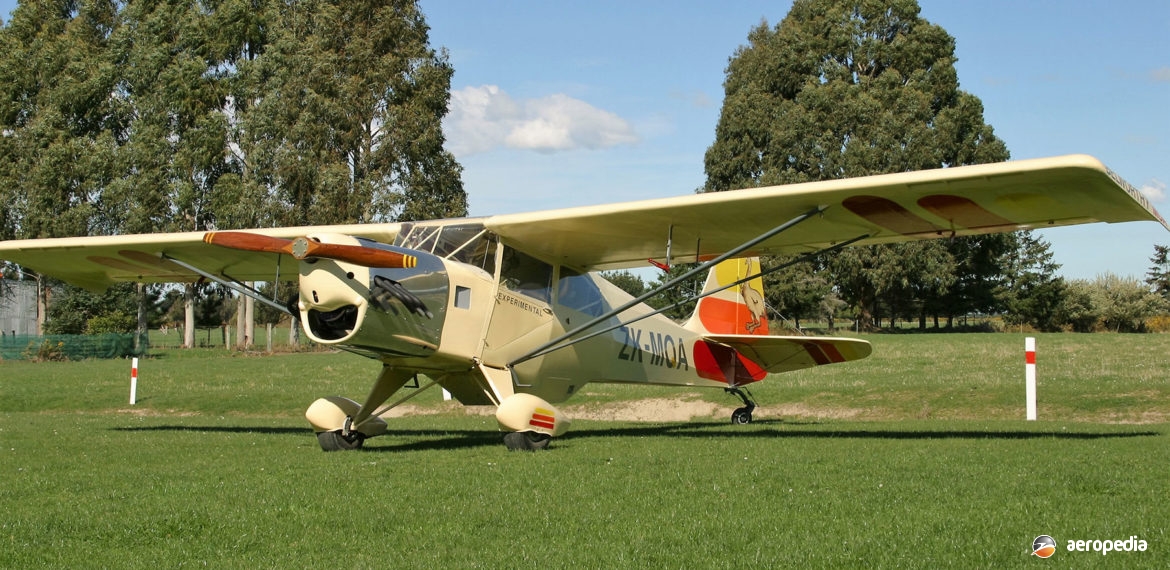Photograph:
Belworthy MOA ZK-MOA (c/n Bel-6) in September 2002 (Evan Belworthy)
Country of origin:
New Zealand
Description:
Four-seat light sport aircraft
Power Plant:
One 172 kw (230 hp) 3800 cc Ford V-6 converted motor vehicle engine
Specifications:
- Wingspan: 10.9 m (35 ft 8 in)
- Length: 7 m (22 ft 10 in)
- Height: 1.9 m (6 ft 2 in)
- Wing area: 17.98 m² (193.6 sq ft)
- Cruising speed: 176 km/h (109 mph)
- Rate of climb: 244 m/min (800 ft/min)
- Stalling speed: 52 km/h (32 mph)
- Range: 741 km (460 miles)
- Empty weight: 624 kg (1,376 lb)
- Loaded weight: 1,089 kg (2,400 lb)
History:
The Belworthy MOA was a New Zealand designed aircraft aimed at meeting a requirement for a large four-seat light aircraft with STOL performance able to operate from rough fields on private properties, with a 100 knot (185 km/h – 115 mph) cruising speed and an endurance of five hours. The name is interesting, the MOA being a huge flightless bird that was similar to an Australian Emu, which was used by the Maoris centuries ago as a source of food until it became extinct.
The prototype ZK-MOA (c/n Bel-6) was built by the designers, Messrs E R and P R Belworthy of Cust in the South Canterbury region of the South Island, and was flown for the first time on 20 May 2000. Unusual for a light aircraft in this region, it was powered by a 3800 cc Ford V-6 Mustang motor vehicle engine converted to operate in an aircraft, driving a Norwest belt reduction drive to a hand-made wooden propeller.
The construction number Bel-6 is interesting in that the builders, the Belworthy family, had previously constructed five other aircraft, these including an Aerosport Woody Pusher ZK-DUA (c/n AACA/172), Clutton-Tabenor Fred Series 2 ZK-FRD (c/n AACA/279), Pietenpol Air Camper ZK-PRB (c/n AACA/755), Jodel D-9 ZK-CVN (c/n AACA54), a Sorrel Guppy SNS-2 ZK-JGK (c/n Guppy-1), and the Figaro ZK-PUR (c/n Bel 7).
The construction of the MOA commenced using the basic airframe of an Auster J-1B, retaining the steel tube fuselage and tail. Wooden wings were built to a new design, these featuring built-up ribs, drooping wing tips, and leading-edge slots for improved STOL performance. Design aim was to build a sturdy and spacious four-seat aircraft but with extra baggage space in the rear cabin, and a further cargo carrying area in a pod under the fuselage. This latter area was designed to take camping gear, ie sleeping bags, a tent, etc.

